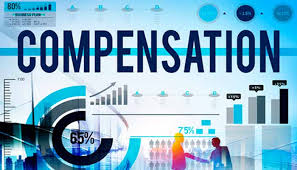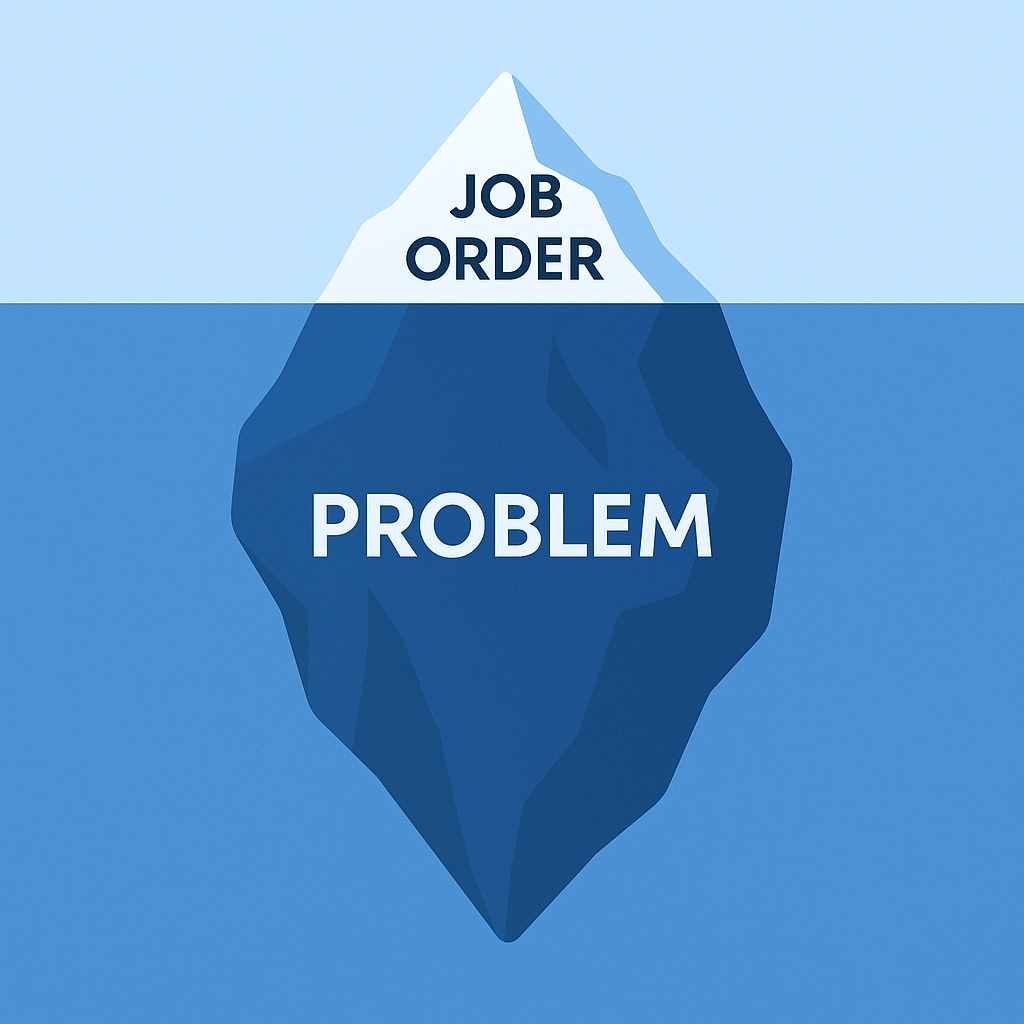Selling With Your Consultant
In my previous post, How to Prevent Unexpected Contract Terminations, I shared how systemizing consultant and client check-ins at key milestones...
One of the many management challenges IT staffing owners face is figuring out how to compensate sales people effectively. We all know that we need to have a sales incentive compensation plan that motivates the salesforce to acquire new accounts and cross-sell within existing accounts, but how do you balance the two? Or, what if your goal is really to improve the bottom line, should your incentive plan be completely different altogether?
within existing accounts, but how do you balance the two? Or, what if your goal is really to improve the bottom line, should your incentive plan be completely different altogether?
As I mentioned in previous post, structuring your sales leaders compensation plan, structuring a sales compensation plan really boils down to having a clear vision and understanding of your business goals and objectives. Owners and sales leaders need to ask themselves, “what is the business trying to achieve and what is the strategy for achieving those objectives?” You can’t effectively mobilize your salesforce and get them to execute on the strategy without clearly defined objectives that are aligned with the corporate strategy.
Business Goals and Objectives
Questions to consider when establishing your business goals and objectives could include:
These are just a few examples but hopefully you can see that as you really think through the scenarios what you thought was your crystal clear objective may have suddenly become murky. What is important is that you’re crystal clear and committed to your objectives and that you don’t just whip together your sales compensation plan on a whim.
What is also important is that you don’t have too many objectives or conflicting objectives. For example, I was once compensated for growing gross profit and net profit or contribution. I liked that compensation plan because it was very simple, easy to track and it tied directly to the business and drove very specific behaviors. However, my performance management plan (how I was reviewed and evaluated) included additional objectives, one being to increase my billable hours and my SVP always liked to give me an earful on how I needed to increase my billable hours. Naturally I responded by saying “why are you concerned about the billable hours when I keep crushing my GP and Net contribution goal?” I grew my business by putting up bigger deals with larger margins and I managed the business more effectively to maintain costs.
This is how I grew the business but my SVP was concerned over billable hours. He didn’t expect me to build my business under this model. This is a perfect case of setting conflicting objectives.
Finally, once you have clearly defined objectives it is important that you tie your business objectives, strategy and compensation plan together. They need to be in alignment because your compensation plan is how you operationalize your sales force and motivate them to execute your go-to-market strategy.
If this seems like a daunting task I assure you that you’re not alone. Structuring compensation plans takes a lot of upfront planning, but when done right it can have a huge impact on the growth of your organization and it can go a long way in helping you create a high performing sales culture. A strong sales compensation plan can also help you build your brand and reputation for recognizing and rewarding strong performance which will help you attract and retain top sales talent.
Considerations for Structuring Your Sales Compensation Plan
Sales Rep Degree of Influence The degree to which a sales person can influences a customer's decision to use your service and ultimately hire your consultant over the competition should be at the top of your list when deciding if and how to award commission. I’ve seen many staffing companies who for years have supported large VMS/MSP accounts where their account manager (who has supported that account for years) has little or no influence over whether or not they will receive a job order and no access to the decision makers to influence their decision on which consultant they will hire yet they’re compensated the same way as a sales rep who has to cold call into new accounts to get their business. Conversely, I have seen compensation plans where sales reps get paid the exact same commission payout regardless of the fee or gross profit margin they generated.
With some accounts, like those where you have been a vendor for years and the account spends millions on IT contract labor you’re just going to get the business-or at least the job orders to compete for the business. In other instances sales reps are going to have scratch and claw their way into landing new accounts. Your compensation plan should align accordingly.
Additionally, the more people involved in the sales process (think recruiters supporting and delivering for those large MSP/VMS accounts) the less the commission payout should be for the sales person. In fact, a better compensation plan (for an account manager supporting a large key account) might be to pay them a higher base salary to “service the account” but to only pay them a commission if the account grows over the prior year or prior quarter. But again, this all depends on what your objective is. Conversely, if the sales person is the only one involved in the sales process brining in the account then they should receive a higher commission.
What Are Your Reps Selling? In the staffing world you have sales reps or account managers typically doing one of the following:
There are probably other scenarios but I think these are the biggies. The point is, you can’t compensate your sales people all the same, regardless of their role. Each role needs to have a specific compensation plan tied to the goals and objectives of that role.
Length & Complexity of Your Sales Cycle Sales reps who are selling a product or service with a long sales cycle (think large enterprise accounts with high barriers to entry) require a compensation plan with a strong focus on the base salary and less of a focus on the variable or commission payout. In essence, they need steady pay because the sales cycle is so long. In the staffing industry this typically equates to the sales reps selling an MSP program or a large multi-year, multi-million dollar contract in which they’re going through a complex sales cycle where they’re selling to multiple decision makers. On the other hand, those selling a product or a service that is more of a commodity such as copiers would want to have a bigger emphasis on the commission payout because the sales cycle is shorter. They shouldn't need to rely on their base salary as much as their counterpart.
Fixed to Variable Salary Ratio Another key consideration of your sales compensation plan is properly balancing the fixed (based salary) to variable (commission and/or bonus) incentive ratio. Base salaries are important because they provide reps with a sense of security (they can pay their monthly bills) but commission is what (should) drives most sales reps.
Inside Sales Reps/Lead Generation
If you have a team of inside sales reps tasked with lead generation and setting appointments for your outside sales reps than I suggest you go with a higher base salary to variable incentive ratio such as 70/30. The reason for this is most inside sales reps are young kids fresh out of school and their primary concern is security and beer money. This allows them to focus on learning and developing their craft while their base salary is unaffected by their performance. But I also suggest you offer a bonus for hitting certain performance goals and kickers for going above and beyond such as hitting stretch goals. As for calculating their bonus, I would tie 60% of the payout to appointments set and the remaining 40% to actual deals or opportunities (depending on your sales process).
Account Executives/Outside Sales Reps
These are your sales reps who are developing new business from new accounts. Most likely they are tasked with generating their own leads, setting up their own appointments and closing their own deals. For this group I suggest you consider a compensation plan where the base salary makes up no more than 50% of the total compensation plan (assuming they have not been handed existing accounts). I personally like a 50/50 split. Here is my reasoning:
Commission/Bonus Payout Formula & Performance Measures If you want to test how motivating your current compensation plan is do the following. Invite each of your reps and recruiters into your office individually and ask them to explain to you in detail their commission plan and how they earn a commission or bonus. If they can’t explain it to you then you have a problem. Keep your payout formula as simple as possible.
Second, clearly define and quantify the benchmarks and performance measures for how the sales rep will earn a commission or bonus payout. Make sure you have the reporting mechanisms in place so that both leadership and your sales reps can track performance on a daily basis. You want your reps to be actively tracking their performance and tying their commissions to their sales pipeline. This keeps them engaged in their deals and drives adoption of strong sales behaviors. You want your reps to mentally be thinking “if I close this deal I will make “x” in commission which will allow me to buy or save….”
Regarding your payout formula, I suggest you be as transparent as possible. In your compensation plan document I suggest you include use cases that show the actual math for how a sales rep gets paid a commission on the various types of deals or transactions. Below is a rudimentary illustration but notice the detail. I want my sales reps to understand their compensation plan as well my CFO. If they don’t than this whole exercise is a waste of time.
|
Gross Profit % Achieved |
Commission Payout |
|
0-15% |
0% |
|
16-19.9% |
2% |
|
20-24.9% |
3% |
|
25-29.9% |
6% |
|
30-34.9% |
8% |
|
35% and above |
12% |
Example: Rep places consultant at XYZ Customer on 3 month contract
Consultant pay rate: $50.00 per hour
Client bill rate: $90.00 per hour
Cost of service (tax and burden) 1.14%
$50.00 (pay rate) x 1.14=$57.00
Total cost to deliver consultant to client is $57.00/hour (total cost of service)
Bill Rate: $90.00-
Total Cost $57.00
Gross Profit $33.00/per hour
Calculating gross profit as a percentage:
33/90=0.366666 x 100=36.6% gross profit margin. In this case the rep would be eligible to earn 12% commission rate on this deal because the gross profit percentage was 36.6%.
DON’T CAP COMMISSIONS! This one seems obvious but surprisingly there are many staffing firms out there capping commissions. Regardless of how you structure your compensation plan, you should never, ever, under any circumstances place a cap on the amount of variable compensation your sales team can earn. Why? It’s the same as capping the growth of your organization. Think about it, if your company’s bonus and commission payouts are tied to results, then why would you want to encourage reps or managers to stop performing once they have reached their payout limit? I once had a capped commission plan and I hit in July. I had half the year left to twiddle my thumbs. What do you think I did? I took a ton of vacation time! Why would I keep working? Unfortunately when you cap commissions this is what happens. Not only that, this also kills team morale and does NOT inspire a high performing sales culture.

In my previous post, How to Prevent Unexpected Contract Terminations, I shared how systemizing consultant and client check-ins at key milestones...

About a year ago, I was serving as the fractional revenue leader, managing sales and recruiting for a client.

If you’ve worked in staffing long enough, you’ve been trained to chase job orders.